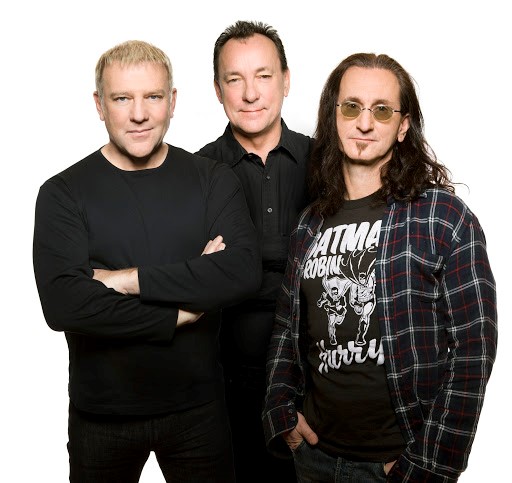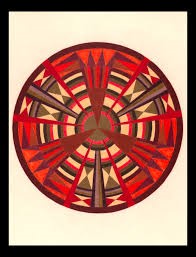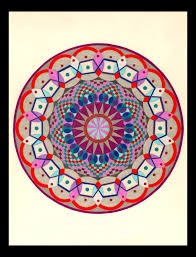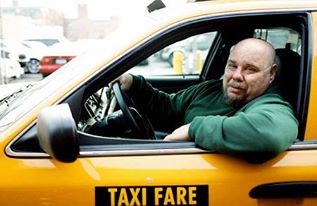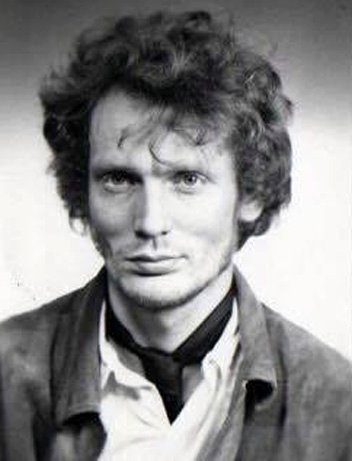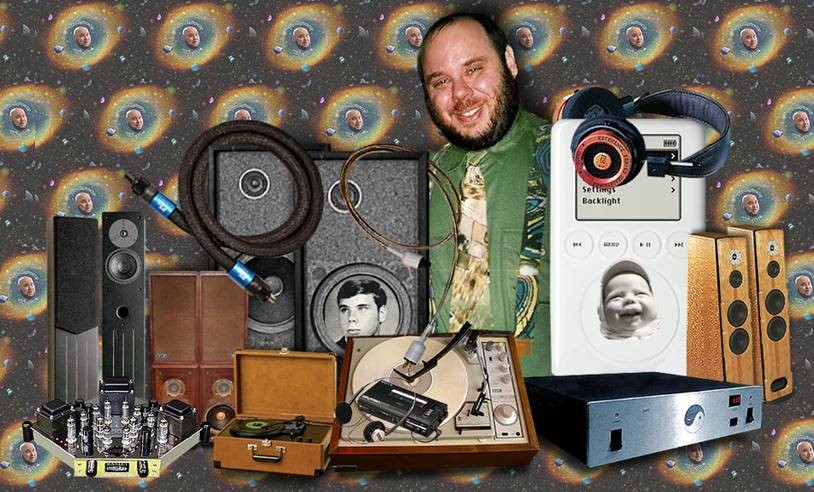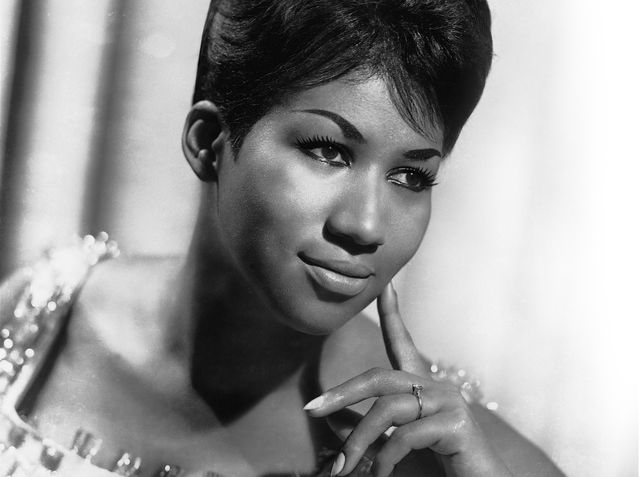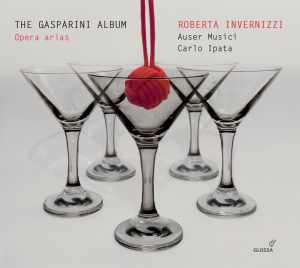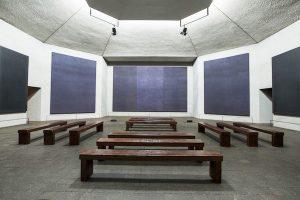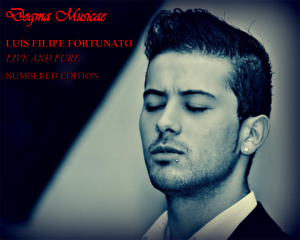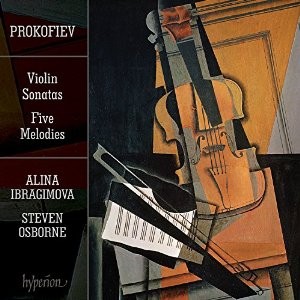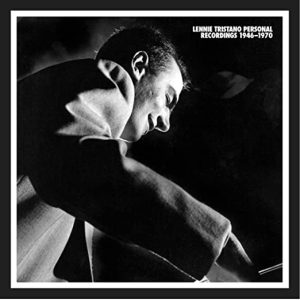Freeze this moment a little bit longer
Neil Peart
GHOSTS…In keeping with my apparent predilection—as an obsessive chronicler of fructifying high end sonics and spiritually inspiring music—to focus my attentions on the fallen, and finally having access to a working computer (again, my long time PC vapor locked on me in pre-pandemic January), Radio Free Chip is once again able to share some thoughts with Positive Feedback readers on a musician who occupies a special place in my heart, Rush's master drummer, songwriter and chief librettist, Neil Peart [September 12, 1952 – January 7, 2020].
I was quite taken aback to learn of Peart's three-plus year struggle with glioblastoma, and the quiet dignity with which he dealt with his illness and met his fate…in private. Neil has been much on my mind these past several months as I revisited his music, catching up with albums I much admired, while discovering many recordings and concert videos which had eluded my net; watched the Rush documentary Beyond The Lighted Stage on cable; and took the measure of Peart and his bandmates, guitarist Alex Lifeson and bass guitarist-synthesist-vocalist Geddy Lee in a host of video and print interviews.
Coming as they all did from working class Canadian backgrounds (Lifeson and Lee, the children of immigrants, Lee's parents having been Holocaust survivors), it became clear, above and beyond the sheer power and ambition of their music, why they nurtured and sustained such a hold on their long-time legions of fans, and why they sustained such a loving personal and professional relationship with each other over the course of 40 years as a recording and touring singularity.
Given how articulate and humane, intellectually curious and committed to long term growth Peart was, as both a gifted writer and dedicated musician, voracious reader and master drummer, it is clear that for Neil, like many aspirational artists, it was not so much about the destination, as the journey itself, which is why he was always open to new horizons and personal challenges, such as how he fearlessly jumped into the deep end of the pool in a series of jazz big band tributes to Buddy Rich, and when he felt himself lacking, how he sought out Buddy's old friend, the man I once heard Rich refer to as "The U-Boat Commander," master teacher Freddie Gruber, as a drum mentor.
And so, when the unspeakable, unendurable tragedy of losing both his daughter and his wife within ten months in 1997-1998 overwhelmed him, Neil stepped away from the spotlight and found solace, presumably, if not meaning, in the isolation and bucolic wilderness of North and South American backroads on a solitary personal motorcycle journey of some 50,000 miles, before re-purposing his life with a new wife and their daughter, and rededicating himself to recording and touring with the release of Rush's 2002 recital, Vapor Trails.
And so, when Neil passed, it deeply troubled me. We were both born in 1952, were both deeply moved by the written word and rhythm, both loved our daughters, and…well…well…Neil Peart was a special person, a decent cat, a creative lightning rod, and deserved better than to check out as he did, with so much life and love left to share, let alone to sit back, have a glass of wine, watch the seasons change and reflect on a leisurely rite of passage surrounded by friends and loved ones.
Now, in the interests of full disclosure, while I always enjoyed Rush's music, and heard them live in concert on two occasions, it would be disingenuous on my part—and disrespectful to the band's legions of true believers—to suggest that I possess any particular expertise or special insights into their music.
I settled in New York City back in the summer of 1976, right in the teeth of the financial crisis, and with the publication of my first article (on Pat Metheny) as the lead piece in the music section of the Village Voice back in September of 1977, whatever aspirations I might have harbored as a musician (and realistically speaking, as the poster boy for Attention Deficit Disorder), I soon began thinking of myself as a professional scribe, and channeled all of that passion into the whys and wherefores of a freelance music journalist. During this transition, coming of age right in the heart of Manhattan's new wave movement, I moved beyond the jazz snob chapter in my evolution, and with a torrent of record company promo copy LPs arriving in the post, I began to reacquaint myself with old friends, and forge bonds with new ones.
And so when I first received a copy of Rush's Moving Pictures circa 1981, I was quite taken by their music, production values and fantastic recorded sound, and while it was politically incorrect given the prevailing aesthetic winds of rock critic reverse snobbery to embrace progressive rock bands with such a virtuoso focus and a lofty metaphorical slant tone to their imagery, I didn't buy into that reverse snobbery, and as a drummer and guitarist and bass guitarist who had been swept away by the likes of John McLaughlin and Billy Cobham, Jack Bruce and Ginger Baker, Robert Fripp and Bill Bruford, I made a connection to the original Mahavishnu Orchestra and King Crimson from a decade before on iconic Rush arrangements such as "Tom Sawyer," "Red Barchetta" and "YYZ," and so that was my point of entry and how Alex, Geddy, and Neil punched my ticket.
Alas, so little time, so much music, and while I certainly remained conscious of their music, I had not kept up as I might have, though with the advent of YouTube and other streaming platforms, I had of late been methodically catching up of late for quite a while before Neil transited, doubling down now that he was gone. Sigh. Ain't it always like that?
However, one way or another, as a drummer I always had my radio antenna aligned in the general direction of Neil Peart, and around 1988-1989, concident to the release of Rush's Hold Your Fire, I had cause to speak with him over the phone, and found him a gracious, thoughtful man, with a wry sense of humor, and we engaged in a stimulating colloquy, though most of our extended encounter and ruminations on music and the particulars of his journey, never saw the light of day, because of the dipshit nature of the editors I was working with, who basically tasked me to pretty much just give them a laundry list of gear so that they could weaponize their advertising salesmen to go all gonzo on record company marketing people and musical instrument companies with whom Peart had a relationship.
We're only immortal for a limited time
Neil Peart
And so, fittingly or otherwise, while time does not stand still, some 32 years after we engaged, traded choruses and high fived each other over our abiding love for the spirit of rhythm, to both honor his memory and mark his passing, Radio Free Chip shares this blast from the past with Neil Peart & RUSH.
We have retained our voicing in the present tense because for all those who have been moved by his music, Neil Peart isn't gone—he's only dead. SOME VIBRATIONS LINGER LONGER.
If the future's looking dark,
We're the ones who have to shine.
If there's no one in control,
We're the ones who draw the line.
Though we live in trying times,
We're the ones who have to try.
And we know that time has wings,
So we're the ones who have to fly
Neil Peart
The western musical world has, of late, become so enamored with robotic techno-rhythms that we've almost forgotten about the simple beauty of a human heartbeat, an odd development in a genre so long distinguished by blues, blackbeats and sophisticated, sensual grooving. We're not calling for a holy jihad against digital sampling—just a moment of reflection to consider what brought our great family of American musics to the forefront in the first place.
Beyond The Lighted Stage
At the heart of American music's greatest achievements has always been the drum. What would Louis Armstrong have been without Baby Dodds, Zutty Singleton or Big Sid Catlett? What would Duke Ellington have been without Sonny Greer? What would Basie have been without Jo Jones or Sonny Payne? Or Bird without Max Roach or Roy Haynes? Or Coltrane without Elvin Jones? For that matter, what would Motown have been without Benny Benjamin and Pistol Allen, the Wrecking Crew without Hal Blaine and Earl Palmer, Stax without Al Jackson, Aretha without Bernard Purdie, the Who without Keith Moon, the Cream without Ginger Baker, Led Zeppelin without John Bonham, King Crimson without Bill Bruford or the Police without Stewart Copeland?
However, in a curious confluence of odd bedfellows and kindred spirits, it has fallen upon jazz and hard rock rhythmaticists to defend the dignity and beauty of the acoustic drum: for jazz drummers because the tonal nuances of their drum kit remain an integral aspect of the music's collective energy and sonic signature. For hard rockers, because when you're riding herd on a stampeding wall of sound, nothing lassos in the beat or moves air quite like a resonant set of acoustic drums.
And can anyone name a more commanding, musical drummer in the hard rock genre than Neil Peart?
As chief lyricist and rhythmaticist for Canada's premier progressive power trio, Rush, Neil Peart has brought a sense of refinement and nuance to a genre whose drummers are often celebrated [sarcasm alert] as missing links to the DNA code of Alley Oop…but we kid, we kid. And while Peart's big blue collar beat is powerful enough to induce nocturnal emissions and cave in your rib cage, just as often there is an infectious inner city doo wop-R&B thrust to his groove, and a thoughtfully conceived orchestral/big band dimension to his crushing fills, melodic counterpoint and metric displacements that set him apart from less ambitious headbangers.
Peart's journey into rhythm began in a quiet industrial suburb of Toronto. "Conformity was an enormous power in the community," Peart recalls with rueful humor, echoing the coming of age experienced by his future collaborators, guitarist Alex Lifeson and bassist Geddy Lee. "It was felt from pre-school right through to maturity; a very difficult environment to grow up in and preserve your balance, self-esteem and creativity. It was difficult to be anything other than what everybody else was.
"That transition between adolescence and maturity, innocence and experience, dreams and disillusionment is a major theme in our lyrics, because that particular passage is the crucial bridge you cross in your whole life. In our song "Subdivisions," the blue-collar background that all three of us grew up in is the common denominator that's probably influenced our different phases of escapism and fantasy, and I see our audiences being congruent with us through many of these phases. There's certainly that commonality; it's a question of background, and of needing certain things to alleviate that background."
So for Peart, like bandmates Lifeson and Lee, his life's focus, and his literal escape from the monotonous grind of a smokestack routine came through music. "I remember when I was around five years old, my dad came home with this hi-fi record player, and I guess the wedding of music and technology was the omen contained in that. Initially my baptism would have been though Frank Sinatra and big band music, which my father listened to all the time.
"The 30s and 40s was just about the only time in history that the best music has also been the most popular. The best musicians were playing the most adventurous music, with great arrangements and wonderful craftsmanship and solos on every song; very high musical values—and at the same time, that's what everybody was rocking out to. And that's a beautiful thing.
"It happened again in late ‘60s rock where that was the best and most adventurous music around, and also the most popular. But that's about the only time I can think of in the history of rock music when that's been the case. When my father grew up, it must have been such a different tempo of life, whereas today we have such a mechanical motivation, where rhythms generally drive
forward straight down on the beat, subdivided into small increments of sixteenth and thirty-second notes. But at that time it was all that dotted eighth note/triplet feel—you know, swing and sway.
"It's funny, but rock never happened for me until later in my development. Music, to me, was an abstract that wasn't stylistic at first, and as a young teenager I didn't like rock music of the time because it was so formulaic—the mid-60s with the whole so-called British invasion.
"And that includes the Beatles, too. I never bought a Beatles record in my life—never liked them enough to do that. I thought Abbey Road was a good album, and Sgt. Pepper's, too, but they were so schizoid. That angelic phony side of them repelled me more than John Lennon's creative-experimental side attracted me. From reading George Martin's book, I discovered that when John Lennon wanted to put out "Strawberry Fields Forever," Paul McCartney was terrified of doing that commercially, and demanded that an insipid thing like "Penny Lane" had to be on the other side. Well, for me as a young music fan and musician, I would hear "Strawberry Fields" and say, yeah, that's great; then hear "Penny Lane" and go God, that's horrible. And that would overbalance the positive side. And it's interesting for me to be grown up now and find out that I was absolutely right, that my instincts were true: here was one honest and experimental thing; and here was one very contrived and calculated.
"The late ‘60s is when I finally did get into it; when everything got blown wide open, and it was a total scene of rebellion, musical and otherwise; with bands like the Who, and the Cream, and the Jimi Hendrix Experience; John Mayall & The Bluesbreakers, and the Yardbirds and Led Zeppelin and King Crimson. It was totally uncompromising music that just sort of hit you in the face, and you had to either like it or get out of here.
"I actually studied piano and theory and learned to read before I ever studied drums. I was probably nine or ten years old and took it for a couple of years—without joy, but with some good results. There was no purpose, and there was no wish to do it on my behalf—it was a kind of thing my mother was insistent that I do, but it paid off. And so my reading began there, and all my early lessons as a drummer were dependent on reading, but I never ever used it after that—the grammar of musical language became the foundation for my intuition. I'm not a fast reader anymore at all, and I learn songs by memorizing them; I can write things down if I have to, but I seldom do.
"When I was 13, I began to play drums. The Gene Krupa Story with Sal Mineo really grabbed me, and then, during my first drum lesson, my teacher played me the Buddy Rich/Gene Krupa drum battle and said ‘That's where we're going.' After about nine months of lessons, he said that out of all his students there were only two of us that he really felt would become drummers—and that was the ultimate encouragement, and I think that's probably the most important thing anybody ever said to me."
Having come this far, it's well worth noting that too many drummers, for all of their chops, they have no idea how to play with a band, because so many of them concentrated on rudiments and rolls when they first approached the kit—drums for drums sake, and not at the behest of the music. But luckily for Neil Peart, his initial focus on what he perceived to be musical fundamentals, was different.
"Basically what I used to practice were rhythms," he recalls. "My first bands were, ironically, R&B bands, and we were playing a lot of the standards like "Midnight Hour" and "I Feel Good" and "Respect" by people like Wilson Pickett, James Brown and Otis Redding. So syncopations between bass drum, snare and hi-hat were probably my main focus for a long time. And then in the late ‘60s, when bands like King Crimson and Yes were coming out, and drummers like Bill Bruford were getting more active in a jazz sense, fills became a focus and I became a lot more interested in employing the rudiments and rolls. When I began getting into the tom-toms and the fills and the double-bass drum stuff, that really changed my focus.
"I packed up my drums and my records and moved to England when I was 18, thinking I'd just find a band. I was a big fish in a small pond, and threw myself into the biggest pond possible, musically speaking. I was made aware of reality very quickly, and that was a very important stepping stone between adolescence
and maturity—realizing that I wasn't going to just walk in there and get picked up and be in a great band the next week. It was all very depressing and very educational, in the school of hard knocks sense: going around and doing auditions out of Melody Maker and slogging around from management offices to record companies in the rain; and being humiliated at auditions, too. Not by design, but in trying out for a band I'd discover that they were far, far over my head in technical knowledge, in their mastery of the language—and also in their snobbery—and I'd just go away feeling like a piece of dirt. A very clarity inducing experience."
So throughout the course of these very personal rites of passage, Peart paid the day to day dues of a musician determined to go for broke and give his inner muse free reign: discovered what he could use and what he must lose, crafting a uniquely personal sound and powerful technique—while searching for an appropriate context.
Which came in the summer of 1974, when Lifeson and Lee, already several years along in the course of their own journey as a band, were looking for a new drummer. (Formed in 1968, Rush's original drummer, John Rutsey, had health issues which mitigated against the rigors of a big time touring band.) And so, on the eve of their first U.S. major tour, they scrambled to fill this rhythmic void, and came away quite impressed both by Peart's musical command and by their nascent sense of collective chemistry.
Neil then had just two weeks to learn all of Rush's material and forge a musical and spiritual bond, which grew by leaps and bounds over the course of grueling series of tours and ever more ambitious albums, culminating in the defining focus of Moving Pictures in 1981, which summed up Rush's past while defining the band's iconic sound signature and zeroing in on the ambitious libretto of their journey moving forward. And some fourteen years after their fortuitous colloquy was first forged, Peart's creative input both as the band's drummer and chief lyricist, continues to shape Rush's arena-sized gestures and ambitiously scaled mythological fables, sci-fi allegories and philosophical parables.
"As a drummer, certainly, I'm not very happy with music without rhythm in it, and I don't mean implied rhythm—I want real rhythm and real people playing it. As far as playing the drum kit, Rush is such an all-enveloping stylistic thing, that I've never felt frustrated about anything; there's never been any style of music I became even slightly interested in, from Nigerian rock music and big band jazz, to reggae and ska, that I haven't been able to sneak in. There's nothing that I don't get to play with Rush.
"I think that the cause and effect of knowing the lyrics so well gives me a unique advantage as a drummer," Peart laughs. "And I sneak things in very much with a mind towards the lyrics, and towards where the vocals are going to fall. I'll even work together with Geddy to find out where his vocal phrasing is actually going to be, if I'm in doubt about either not reinforcing the right thing as a drummer or else of trespassing upon him or a soloist for that matter. I think there is certain ground that is sacred territory, and I wouldn't dream of over-developing anything underneath the guitar solo or underneath the vocal line—it's just a matter of politeness if nothing else. And I have no problem with that.
"And it's great to reverse the roles. On the new album [Hold Your Fire] we have two songs where I actually play a drum solo while the other half of the rhythm section and the lead instrument keep time And I think that's the most wonderful thing in the world, and that's what most bands wouldn't get to." And then as an afterthought that would have made the late Buddy Rich quite proud, and elicited a nod of approval from Max Roach, Peart allows as how "It's obviously not a gift we've been given to do that—it's something drummers fought for and demanded to have."
And as a result, while it might seem as if Peart gets to tee off non-stop through the music—the limits of his considerable endurance and the parameters of structure and good taste being his only real constraints—truth be told, he is not so much indulging in flashy HooHaa, as playing real drum parts and orchestrations in the jazz/symphonic sense—no longer a mere accompanist marking time, but stating the case for the drums as an equal partner in the collective conversational dynamic. And if that means that the guitarist and bassist often mark time so the drums can wax melodic, so be it.
It is this thoughtful, free-flowing power which has made him such a rhythmic paradigm for both for aspiring young drummers and experienced jazzbos searching for grace and intensity in the rock genre. But it is such a unique situation for a drummer in any genre, that one wonders how comfortable Peart would feel as a creative drummer if he were compelled to adjust.
"Frankly, I probably wouldn't do it," he admits. "I've tried to work in situations like that. When I went to England, I tried doing session work, and I just found it so unrewarding. It's an idiosyncratic thing; it depends on your own temperament, and I know that a lot of people are very happy in that situation, and there's no reason why they shouldn't be—and there's nothing bad about it by any means. But temperamentally it doesn't fill any need for me—I get no satisfaction out of playing what I'm told to play. I get satisfaction out of dreaming up something to play and then trying to play it. That's the challenge for me, and that's what I find rewarding.
"It really is a luxury for drummers to have that kind of freedom," I suggest, "and not to have the aesthetic or financial pressures dictating…"
Free Will
"I don't see it as a luxury—I see it as a need," Peart interjects firmly. "It's the only way I'm interested in working. And the reason I have such an opportunity is because I demanded to have it. I would have done it that way in any event, though. Again, that's the choice I made as a young musician—that if I couldn't make money playing the music I like to play, then I would play it anyway and get my living some other way. So I don't think that's a legitimate constraint, but it does illustrate the two mentalities.
"You see, there are really two ways to start out being a musician, I think. If your point-of-honor is just to make a living playing music, then you will be happy doing what you're told and doing whatever you have to do, whether that's playing the Top 40 four sets a night or playing jingles eight hours a day. It doesn't matter—because all that matters to you is that you earn your living as a musician. Well, to me that's a meaningless distinction; whether I make my living from it is irrelevant—I never became a musician to make a living. It had nothing to do with my wish to play music, so why should it have anything to do with my methods of playing music. Music is what I like to do.
"Ideally, a drummer doesn't have to be a drummer in the conventional sense. He can be another color or another activity, just to keep it busy and happening and provide the kind of excitement that only the drums can provide. And that is an ideal situation—that sense of shared timekeeping.
"I've read quotes from drummers with the confidence to say so, that ‘It's not my job to keep time—it's everybody's job to keep time.' And that's an attitude that I've really learned from, so now I do depend on the whole band to share that responsibility.
"And certainly in a band the size of, say the James Brown band or a big band jazz situation you can be the common denominator of the time, and you don't have to have that tense, white-knuckle approach to holding the thing down, that so much modern drum machine or click-related music now demands. That's a tremendous amount of stress on drummers, and it's not something I'm adamantly against, because I find it easy and enjoyable to do.
"But I think for a lot of people it's not; and even for me—while I might enjoy it—it's still very stressful to sit there in the studio or on stage with a sequencer blasting away and having to keep perfectly, mathematically in time. Or, in a worst case scenario, some of the songs on Hold Your Fire are half sequence and half not, so I'm sitting there playing my natural thing, and knowing that in four bars a sequencer is going to come in with a mathematically precise time, and if I'm even the slightest bit fast or slow before that comes in, it's going to feel terrible, and the whole band will sound stupid."
This sense of shared timekeeping extends to Rush's interpolations of odd time signatures and metric displacements throughout the music, an often disquieting force within the four-square cruising thrust of the basic rock pulse. It put me in mind of my conversations with drummer Ginger Baker where he stated flatly that "Seven-eight, to me, is like…forget it. Playing in times like that is insane, is wrong—it's nothing to do with time. Time moves itself in four—time is the fourth dimension for fuck's sake. Time is four. That's all it is. Everything else that happens in time is on four—seven isn't."
Peart is aghast. "Oh, shut up," he pleads.
It's worth noting that Ginger's introductory bolero to "White Room" is in five as was his Cream song "What A Bringdown" and the Blind Faith feature "Do What You Like," and in subsequent years he did indeed explore arrangements that were not in common time.
To that point about four, sometime after that quote was published in Musician a reader sent me a letter with an interesting second opinion from Rudolph Steiner's The Inner Nature of Music and the Experience of Tone: "Regardless of man's relationship to rhythm, all rhythm is based on the mysterious connection between pulse and breath. The ratio of 18 breaths per minute to an average of 72 pulse beats per minute. This ratio of one to four can naturally be modified in any number of ways. It can also be individualized. Each person has their own experience regarding rhythm. Since these experiences are approximately the same, however, people understand each other in reference to rhythm. All rhythmic experience bases itself on the mysterious relationship between breathing and the heartbeat, the circulation of the blood."
"That do anything for you, Neil?"
"No. That to me is a lot of mysticism."
"Well, you're a mystical kind of guy, aren't you?" I suggest helpfully.
"Not at all," he avers. "I'm romantic—not mystical. And that hooha is patently, demonstrably wrong. I think that time moves in ones: take Peter Gabriel's "Salisbury Hill" or Pink Floyd's "Money" which is in 7/4—but what people are conscious of are the quarter notes. They don't care about where the bar turns around. Nobody does. And I think that's a whole load of mysticism, period. People are filling volumes of books with all those amazing numerical findings and spiritual revelations. I just don't have time for it.
"No, to the contrary—I think that they're very natural. They are difficult, and that's a thing that's always forgotten about regarding music: that it's a hard thing and it's a science and it's an art and it's a discipline—and it takes a whole lot of work to understand it. It's challenging to enjoy music made purely for its own sake—it puts certain demands upon the listener, just as good writing puts demands on the reader. You have to meet it half way.
"And for a lot of people, of course, music isn't important enough in their lives to go to that trouble; even for a lot of musicians it isn't. But, oh, it's been proved so many times that odd time, if skillfully handled and used for a reason, can be very comfortable to play or to listen to. Those two examples I gave are of songs that became top 40 hits, despite being in odd times. From a playing point-of-view, it takes some time to learn to be comfortable in seven or five or whatever, but once you are, boy, it's a joy. I just love playing 7/8; it's just so comfortable—there's such a lilt. It's applicable to Strauss waltzes, you know. Again, why should 3/4 be comfortable?
"It's often said that African music is supposed to be based upon a pulse of one or four, but when I was in Africa I heard 3/4 and stuff, and it felt so natural it was just great. And even though it was in 3/4, it was worlds away from the lilt of a Strauss waltz. And in both cases, they're odd times, but they don't feel odd, and they're not odd, but another kind of cosmic rhythm, if we want to get mystical about it. I think, that if you wanted to delve into those kinds of sub-tangible things, the world and the universe are full of all kinds of rhythms that are so complex and so intertwined in multiples of seven that add up to fours, that all those things do come naturally—because they are.
"African music would be more of a compounding of time. So much of it is in 1/1, which I really like—I think that's great. It's just the sense that there aren't bar lines as such. It's just a pulse dependent upon that quarter note—I think that's the essence. Or else I heard things in 3/4, and some in 2/4 or 4/4, but the essential thing is always that quarter note—the downbeat."
I endeavor to clarify Baker's fundamental notions. "Ginger characterized the basis of the African pulse as being the midim triplet—it always lands on the second of the three. His perception of the pulse in African music is that it is based on that in-between triplet."
"Okay, I can see that, certainly," Peart allows. "I understand what he's saying—he's just taking it a level deeper. That's certainly true in the rhythmic structure of the intertwining—in the polyrhythmic sense. I guess that's the key to it. In the polyrhythms, that's absolutely true—there is a certain triplet feel in there that is almost imperceptible to the western ear.
"It's a whole different world in which these rhythms are structured and conceived—and they fulfill different functions for those cultures, too It's a quest for a lot of drummers to listen to other musics and try and learn something from their rhythmic approach. Certainly it's all a big influence on me; reggae was an enormous influence on me, just because of the rhythmic side of it—it pointed up a whole new world, really. And then a lot of modern and traditional African music; what pop music you can hear over here, like King Sunny Ade of Nigeria, for instance—the rhythms of their music were really influential.
"And a new band—well, new to me, anyway—Juluka, from South Africa; I find them really interesting, because, first of all they're South African, but they're three whites and three blacks, and they incorporate Zulu chants and even costumes and makeup into their music and lyrics and live show. I really think that's cool, because of their tradition in modern music. And they're really influenced by reggae, which is a beautiful full circle; for music having been taken out of Africa and transplanted in the West Indies and then evolved into a new kind of hybrid, and then that hybrid returns to Africa and influences a hybrid of traditional and modern rock.
"The root of the difference between reggae and its American source materials, such as New Orleans R&B, is always that upbeat, and I've never heard it implied or amplified as it is in reggae music. And the interesting thing, too, if you travel around the West Indies outside of the tourist track, you start to notice that there are different styles for different areas; and a little different rhythmic twist that bands from Guadalupe and Martinique have as contrasted with Jamaican musics; and that mixture of calypso music has a place in there, and it's partly Spanish and partly filtered up from...Brazil, probably. So there's so much that goes into that melting pot, but to me the key to it is always that upbeat feel, that was so influential. I first heard it through jazz; it sort of crept in through people like Billy Cobham; then when I heard it stated so dramatically in reggae music, I became entranced by it as so many people did, obviously.
"I kind of feel a new rhythmic wave rolling in, too, as exemplified by someone like Manu Katche, that's based a little on reggae, but has a new syncopation about it, a kind of implication of the beat, rather than playing on it. It's ethnic, but at the same time it's very cosmopolitan. Manu's a perfect example of that, because he's half-French and half-Ivorian, which is from the Ivory Coast, and he was brought up in Paris. It's a cliché to point this out, but a kind of world music is emerging in that style of rhythm, and I think more and more drummers and bands will probably be jumping on that stylistic approach."
Above and beyond the rhythmic sophistication and thoughtful power Peart brings to Rush's heady sci-fi potpourri of arena rock, world music and electronics, for this drummer, the single most alluring aspect of Neil's concept is the melodious articulation and rich tonality of his sound; sonorous, curvaceous and round, with a warm, powerful attack that rings to the rafters in even the most cavernous venue. Peart's sound carries, and it sings. Not just because he has the chops and endurance to play at full extension, his wrists snapping flamboyantly like twin cobras for hours on end.
However, that's not the primary focus of his playing, as it is for so many missionary position thwack-a-wackers. Neil Peart plays with touch, eliciting a wide range of tonalities from a single drum, so that when he unwinds on his big orchestral scaled multi-percussion kit, you can not only feel the beat in the small of your back, you can hear each drum and cymbal's note clearly articulated. Good taste as a direct corollary of meticulous tuning.
"It's a lot of trouble to learn how to tune that carefully; and it's a lot of trouble to learn how to mike double-headed toms. A lot of sound men are lazy, and a lot of drummers are lazy—it's just a whole lot easier to shove a mike up in there. When I first started, I used to employ damping a lot; then gradually, less and less—until now I use none. I recognize it as a function of increased perception and an increased ability to tune.
"Now I wouldn't have wanted to hear that when I was putting bits of tape on my drums, but in retrospect that's what it was—I couldn't tune very well. Now I can tune accurately enough that nothing ugly is going to get out. I try to get the whole instrument in tune with itself as much as possible, which means top head to bottom head; and which means around the perimeter of each of the two heads—the resonant head as well as the batter head.
"Actually, in my main kit, I've always used double heads. The only open headed drums I've ever used in the last twelve years were concert toms of six, eight, ten and twelve inches, and lately I'm employing them as closed toms, too. So as far as I'm concerned, two-headed is the way, unless it's for an effect, like a timbale or a gong bass drum, which I use single-headed. To me it's a question of how many voices you want to have. If you just want to have one good easily reproducible, easily recorded sound, then open-head is the easy way to go. Or if you have no P.A. system at all, and you want to be heard, it helps get a little more attack out there. When I was with small groups that were trying to be louder than me, I found that not having bottom heads provided more attack, and consequently I could be heard better, and I could hear myself better.
"But given the best of all possible worlds, I much prefer double-headed drums, because you have a choice of voices and you can go to the rim and you can choose the amount of force with which you want to push the head in, and depress it, and even detune it. I like to have all of those options available to me, and I like to have that sense of delicacy about playing. Whereas with open headed drums, it's like the first Simmons drums—all you can do is wallop them. But I understand their usage, and when they're employed in the studio to just get a good sound fast, it certainly works."
"Do you see your extended drum kit as a pitched tonal instrument?" I ask.
"Absolutely," Peart enthuses. "It's a choice of voices for me. And I never thought one way or another about it or made a big fuss about it, but for me I always added one piece at a time; never went out and bought 57 drums at the same time. I just gradually added on, thinking, ‘Well, I can use one more voice lower here, or one more higher note here, or a different cymbal presence using a splash or China or large crash-small crash.' All those things are just a voice, and as you are able to expand you own voice, you can well choose to add different sounds and moods and notes and textures to it. It's funny," Neil notes, "the first drum kits were 57 drums," he concludes, again suggesting the old Heinz advertisements extolling the virtues of their 57 varieties of pickles as a metaphor to my over-active mind, but I keep this to myself, and allow him to complete his thought. "All the silent movie accompanists and early jazz drummers had their racks of temple blocks and chimes and all that stuff, so it's so funny for so-called traditionalists to be saying ‘Well, four drums is all you need.' Yeah, you revisionists, you," Neil chuckles.
"Do you consciously put the tuning of your drums in the same range as that of the guitar and bass?" I wonder.
"Not consciously at all. I just choose a pleasing series of intervals and a pleasing voice for each drum—so I guess it's a balance. There is a certain interval I know I tune to, but it corresponds to the way the drum itself wants to be tuned or pitched, and I remain responsive to that, and try and find a tuning to each drum that encompasses both those wishes."
"Do you find that the tonality of the kit effects the sound of other instruments?" I wonder. "Like the way they use the tympani in symphonic music to reinforce the octave, the root and the fifth?"
"That's a good question. I think in certain contexts they could, but not in the context of our music. No, I understand it in that context, where the instruments are much more dependent on each other in a sonic sense; certainly in jazz, too, where it's possible occasionally for one instrument to overwhelm the other or dominate it or be submissive to it—that's a different relationship of tones and tonal qualities. Whereas in our band I think they always remain very much discrete. Certainly, they are blended in terms of the overall effect of things, but not interdependent in the sense you describe."
"So you're not conscious of key of E, key of A, key of D, key of G, key of B when you tune?"
"No, I think again that it's an intuitive thing, and I have had my tuning analyzed and it worked out to be something—it's not like those things don't apply—but, no, I don't consciously apply them in a numerical sense. I know that I do tune to specific notes, and a specific interval, and an overall specific chord—and even probably a modal set of intervals—but I've never analyzed them. Except in the quest to find them. I think every drummer takes a long, long time—whichever way you go about it—to arrive at that destination.
"But I know that I do apply exactly those values that you are talking about and combine tonalities and sonorities with a careful mind towards which one sounds best. A certain cymbal works best with a certain drum; like a Chinese cymbal with a certain note underneath it reinforces its presence—certain drums are dry and certain drums are very throaty. I'm very conscious when I choose cymbals of how they'll integrate with the kit as a whole.
"I look at putting a drum pattern together as orchestration—choosing certain voices and moods that can produce different sonorities and rhythms; using a hi-hat instead of a ride cymbal; concentrating on lower toms or higher toms to best suit a totally different mood—all with the aim of serving the song.
"About two years ago I went down to the Percussion Center in Fort Wayne, and set up six drum sets side by side, and put the same heads on them, with the same tuning; to my surprise, Ludwigs were the winners. They had a certain quality of resonance I was looking for; an exciting, snappy throatiness. The Ludwigs just had that little tiny nuance of something special. They're the new Super Classic Shells: the strength of the tonality and the definition of their resonance finally won me over.
"Lately I've been using the new Evans heads. They're not hydraulic heads, but single-plys. I'd previously been using Remo Ambassadors, which are actually too thin for me. I prefer a single-ply head when I can get one that's durable enough. Because I don't like changing heads a lot. I don't subscribe to that new heads for every show business—that's absurd. So I use Remo Diplomats on the bottom, and either Remo Emperors or these new Evans on top. I really like the resonance of the Evans.
"And cymbal-wise, it's all Zildjian, with the exception of a Wuhan Chinese. I think that the next big thing is going to be the decay-less cymbal; Terry Bozzio's been a pioneer of this—he built a drum kit entirely composed of Chinese and splash cymbals. Manu Katche's use of Chinese and splash cymbals on the new Robbie Robertson is great, too. Manu will play a little triplet on his splash cymbals and it's so effective—I just love the feel of it. Stewart Copeland's done a lot with this, also; very short sounds, where you can actually play rhythms on cymbals."
And while some drummers see the synthesized clock-beat of digital samples and rhythms as a threat to the human element, given the ongoing nature of Peart's journey, he can still discern the ghosts of the tribal elders in these machines.
"I don't see why it has to be an either-or-situation. I think machine made music simply needs someone who is sympathetic, like the way Thomas Dolby or Peter Gabriel can program a drum machine with a true sensitivity towards rhythm. That's so rare, and you hear so much machine stuff that has no drummer's temperament about it. But I think they are a great tool, and while I don't have any use for them, I'm glad that Geddy and Alex have one so that I don't have to sit there like a hack while they try and figure out an arrangement. I can go away and think of something else, and when there is something to work on, I can take the place of the machine, go forward and orchestrate it.
"I see electronic drums as conveniently packaged colors. I can have a whole orchestra of African sounds, Indian sounds or keyboard/percussion sounds in a way that's impossible to achieve otherwise. To me that's the great magic of it—it allows you to move beyond the physical limitations of analog sounds. I do think of them separately, though, and I even kind of segregate them a little bit, where all the electronic stuff is in the back.
"Why do I send them all to the back of the bus?" Peart concludes. "Because they're effects rather than instruments; you can't really play them—you can only hit them."
A spirit with a vision is a dream with a mission
Neil Peart
POSTSCRIPT
Neil Peart was a renaissance man with a wide range of interests, an articulate, witty, well-read man, who authored several books and who viewed himself, in every way shape and form as a work in progress.
Neil was also a master drummer who dedicated his life to his instrument and to his songwriting and to his band, while also being a devoted student of the global language of rhythm.
Some years back, Neil generously lent his name and his prestige to a project featuring a number of all-star pairings between leading drummers and the Buddy Rich Big Band out of support for the Rich Family and the memory of this iconic musician.
At first blush, Peart found himself on stage playing something that he had not rehearsed, and instead of shouting "MEDIC" he gutted his way through but was deeply embarrassed by his performance.
On first blush, did Neil sound like a fish out of water? For sure, but dig, you do not master the conversational art of jazz drumming by listening to records, you master it by PLAYING WITH JAZZ MUSICIANS.
Neil's response? One is never too old to learn. He committed himself to manning up and hunkering down and putting in the study time necessary towards getting better in the jazz genre.
He did his homework, and woodsheded with a number of jazz and jazz-fusion contemporaries. He even had the humility to go all the way back to his basics, looking to rebuild and repurpose his technique, is overall approach to the drum kit and the art of drumming.
It is my understanding that in seeking out the advice of Steve Smith, a master drummer with his feet planted firmly in both the rock and jazz genres, Neil was pointed in the direction of Buddy's good friend, the man I once heard Rich refer to as "The U-Boat Commander," drum guru Freddie Gruber.
He got better.
A LOT BETTER, as witnessed by this 2008 performance with the Buddy Rich Big Band of the Duke Ellington classic, "Cottontail."
A Sonny Greer quality "Cottontail." Well, the man Papa Jo Jones referred to as "Mister Empire State Building" remains the gold standard, his fingerprints all over this original minting of the Ellington arrangement
Oh, and ponder at your leisure, the parallels between how the Duke's main man incorporates orchestral percussion (such as sundry Temple Blocks, Timpani and Symphonic Bells) into his kit on this performance snippet from 1933 much as Peart pioneered during his 40 year tenure with Rush.
Furthermore, not only did Peart develop more confidence and command during his sleepaway camp outings playing jazz, but his deep dive back into the basics of his art form were reflected in his subsequent growth as an ensemble player with Rush, and his enhanced command as a master thinker on multiple percussionist kit, as witnessed by this bravura showcase which closed out DRUM SOLO WEEK on The David Letterman Show.
Un grosso respecto por Neil Peart, who had nothing to prove to nobody, yet his dedication to the instrument and his respect for FOR ALL MUSIC continues to resonate in the spiritual vapor trails he left behind; the enduring creative output of a man for whom music was never about any conclusive destination but rather THE JOURNEY ITSELF—an ongoing journey which transcends the hear and now.
And HOW.




